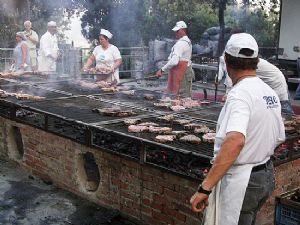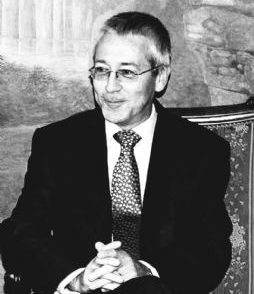His iconic homes took the U.S. architectural world by storm in the early twentieth century. Considered the ‘best American Architect of all time’ by the American Institute of Architects, Frank Lloyd Wright is the original ‘household name,’ known worldwide for the stunning, uniquely organic design he pioneered. What many do not know, however, is that the architect, like so many famed artists and designers before him, had a love affair for-and in-Tuscany.
In 1909, having become a social pariah in his home state of Wisconsin, Wright left his wife, who at that point refused to give him a divorce, and their six children, and headed to Europe. What he termed his ‘voluntary exile’ was also an opportunity to indulge in a scandalous love affair with Martha ‘Mamah’ Borthwick Cheney. Their relationship had begun shortly prior, when Wright was commissioned to design a home for Cheney’s husband, Edwin; Mamah was also an acquaintance of Mrs. Wright, as they were members of the same women’s club.
The couple arrived in Fiesole in 1910, where they were guests at the Villino Belvedere. Aside from long walks with Mamah in the colle Fiesolane and jaunts into Florence for art and dining, Wright also spent time sketching in a room of the Villino.
Fiesole, dotted with villas that blend seamlessly into the majesty of the hill’s forests and groves, cannot but have inspired the architect who championed the coexistence of habitation and vegetation, and the efficient use of natural spaces, tailoring them to the landscape, not vice-versa.
As the name ‘Villino Belvedere’ suggests, the views from his makeshift studio were breathtaking, and the inspiration for Taliesin, Wright’s summer home in Wisconsin, was his temporary Tuscan abode, with its planimetric roofs and, above all, its dominant position upon and harmony with the hill that is the site of the villa.
Wright’s stay in Fiesole proved productive in other ways. For the rest of 2010, to mark the centenary of Wright’s visit, the municipality of Fiesole, the province of Florence, the Michelucci Foundation, the faculty of Architecture of the University of Firenze, the Order of Architects of Florence and other regional institutions, as well as the Frank Lloyd Wright Foundation will host a series of events, exhibitions, conferences and lectures to spotlight the genius of Frank Lloyd Wright, the influence the master had on architects of the so-called ‘Florentine school,’ such as Leonardo Ricci, Franco Bonaiuti and Giovanni Michelucci and, above all, to analyze the influence his sojourn in Fiesole had on his own work.
The first exhibition, which opens on Thursday, June 17, in Fiesole’s Archeological Museum, will gather, among others, an array of drawings and documents from the Frank Lloyd Wright Foundation in Scottsdale, Arizona and the University of Utah Library, many of which have never before been seen in Italy. They will be extraordinarily displayed together with drawings of Taliesin, Wright’s final residence and the current headquarters of the Frank Lloyd Wright Foundation. The event will be hosted in the rooms of the Archaeological Museum in Fiesole, offering visitors an opportunity to indulge also in the ancient history of the territory’s Roman and Etruscan ruins.
Various sketches Wright completed during his stay in Fiesole will be on exhibit, including his project for a sensational house meant for Fiesole but never built. The notes above these drawings read ‘Studio for the architect’; apparently Wright could picture himself turning out his masterpieces from the peace of these hills.
Another exhibition, to take place later on, will focus on works created or designed in Fiesole by some of the most famed students of the ‘Florentine school’ of architecture from the post-war era influenced by Wright’s work. The exhibition was planned in conjunction with the cultural association Fiesole Futura, and aims to highlight the extraordinary cultural and artistic heritage of the territory of Fiesole. Meetings, conferences and guided tours of the exhibition and places where Frank Lloyd Wright was a guest will take place throughout the rest of 2010.
DID YOU KNOW?
Wright’s return from Europe can best be described as disastrous. Because of the scandal of his relationship with Mamah, he did not receive another major commission until 1916 (for the Imperial Hotel in Tokyo). Taliesin was completed in 1911, and Wright moved into the home with Mamah shortly thereafter. The home inspired by Wright’s time in Fiesole and the woman he loved there was, however, the place where the architect’s life would change forever: in 1914, a servant, Julian Carlton, set fire to the living quarters of the residence and with an axe murdered Mamah, her two children and four of Wright’s associates. Mrs. Wright granted her husband a divorce in 1922.
FRANK LLOYD WRIGHT TO FIESOLE AFTER 100 YEARS
From the hills of Florence to the ‘resplendent hill’ Archaeological Museum Sala Costantini,
Via Portigiani 9, Fiesole
June 17-August 30
Daily, 10am to 7pm
Admission: 5 euro; 3 euro
Tel. 055055; 0555961293;







